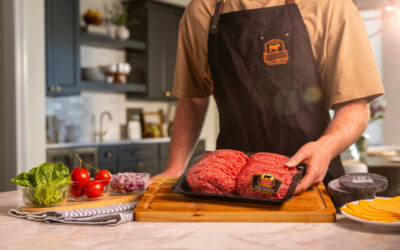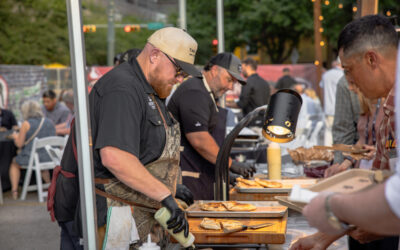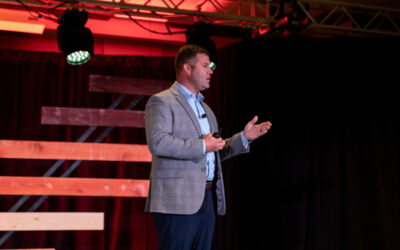
It’s there for the taking!
I recently saw a commentary by a sale barn owner about the use of Longhorn bulls on heifers. While that thought is certainly not original, and was used to some extent in the late 1970s and early 1980s (calf pullers were at the peak of their market then), it is not without problems, because even a solid colored Longhorn calf does not produce a carcass with much value built into it. The idea that he was attempting to convey, was to avoid any dystocia problems in the cowherd. Brother, if that’s what thou art looking for, you can use an Angus bull on heifers with an above-breed-average Calving Ease Direct (CED) EPD and you will (1) have VERY FEW dystocia problems and (2) have a calf with a lot more value at weaning time! A Longhorn bull is NOT a good opportunity. Yes, you’ll get a little calf that the cow has very little trouble delivering, and they’ll get up and nurse right away. And a big set of horns. But you give up performance and carcass quality. Sorry, Longhorn fans, but a commercial cow-calf rancher or farmer that sells those in the open market is going to get his head handed to him on sale day; or watch them bring 5-8 bucks back of the finished market.

In another instance, a cowman called me once to try and market his Jersey sired (on Angus cows) calves. Did I know a feedlot that might buy them? My question was “why in the world would you use a Jersey bull on Angus cows?” He replied, “Because I don’t have time or resources to watch cows at calving time, and I wanted an easy calving sire and a live calf.” Well now, isn’t that like cutting off your nose to spite your face? Do you realize what the discount is between a/an (insert any beef breed name here) sired calf is and that of a dairy breed sired calf? You could lose 2-3 percent of the calves and still be WAY ahead with a beef breed bull!
The use of an Angus bull on any type of commercial cowherd has many obvious benefits, but I’ll take this one step further: as I write this, the Choice/Select spread is $ 14.00. On an 800 lb carcass, that is a $ 112 advantage on the higher-grading Choice carcass. Add a CAB premium on top of that (currently $ 5 to $ 6, but let’s take an average of $ 5.50); and you suddently have a carcass worth $ 156.00 more than a USDA Select one. A USDA Prime is worth nearly $ 300 more than a Select!
To those of you who’ve never thought about it; that is, WHY black-hided calves bring more at the salebarn? It is because of the (read carefully the following capitalized phrase) CONSUMER DEMAND FOR HIGH QUALITY BEEF! Consumers want it. They are willing to pay for it.
Let’s visit about this along another path. You’re going to the hardware store to purchase spade. There are three brands there. The first one, made in the U.S. and of highest quality steel and a hickory, real hardwood, steel encased handle is $36.00. The next, a mid-level spade made in India, is $24.00; has a what looks like a wood handle, but is definitely more cheaply made, the handle is not hickory, the steel is a lighter gauge. The last one is a $16.00 spade that is made in China, has a plastic handle, and, while functional, is definitely NOT very high quality. Which one will you buy? Many people, driven by price, purchase the Chinese made, plastic handled, cheesy, flimsy, spade. The handle breaks the second time you use it in the garden or farmyard, while the high quality tool is still being used by someone who purchased it at your estate sale (not wishing you bad luck, but remember the death and taxes thing?).
If the consumer wants a higher quality product, they will pay for it. And we continue to see that in our market place, with record sales (again!) in fiscal year 2012 at 812 million pounds! This “pull-through” effect, in fact, lifts prices for high-percentage Angus calves.
At a trade show a couple of years ago, I was confronted by a gentleman from another, much, much, much smaller breed organization who was touting their branded beef product. He begins to tell me what is wrong with the Certified Angus Beef program. I was feeling very charitable that day, so I bit my lip and refrained from saying, “And your program sold how many pounds of beef last year? Maybe, say, 10,000?” And, “Your calves are worth how much more in the marketplace than the average?” It’s not worth even arguing about, because he knew the truth, and I did too.
You see, what you have in front of you, as a commercial cow-calf producer, is extra MONEY for the taking in the market. Whether you retain ownership or sell calves at the salebarn after weaning, your Angus-sired calves are worth MORE! More dollars in your pocket because the CONSUMER DEMAND is there for the end product. You can read all about it with this story from Tom Brink with Five Rivers Cattle Feeding at ttp://www.cabpartners.com/news/press/GEN_WhatFdydsWant_NR.pdf
The opportunity is there. Seize it! It is simply a decision you’ve got to make. Do you want to be in the business of raising a high-quality product for the consumer and receive a premium for it? The decision is in your hands.
~Gary
You may also like
Success, Despite Challenges
Today’s market is complex and competitive. The collective effort of stakeholders across the supply chain positions Certified Angus Beef to meet the record demand for premium beef moving forward. Signals across the beef industry are clear and Angus farmers and ranchers seeking high-quality genetics that deliver premium beef are producing a product in high demand.
Keep the Supply Coming
A record-high 800 registrants from 17 countries gathered in Austin, Texas, to learn more about CAB, become inspired by the culinary work of chefs and pitmasters, and celebrate sales and production success. But at the forefront: supply and demand, a reflection of the chaotic past year, and preparing for what’s ahead.
Consumer Demand, Power of Quality
Demand for high-quality beef persists. But with that demand comes challenges. From tight cattle supplies to higher costs and increasing pressure on retailers to deliver a consistent eating experience, the pressure is on. David O’Diam, CAB VP of retail, addressed the current retail beef environment, highlighting both opportunities and challenges in today’s marketplace.



